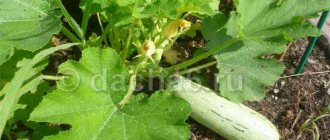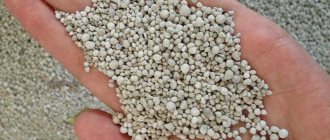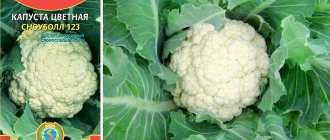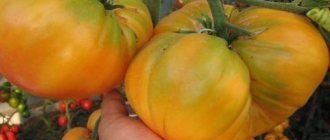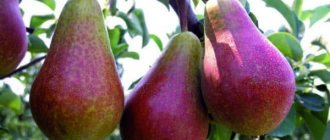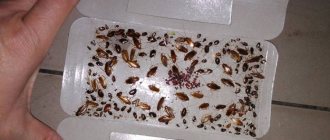Broccoli is a type of cabbage that came to our beds relatively recently. The crop began to be grown in the Mediterranean. Translated from Italian, broccoli means “flowering stem of cabbage.” Previously, cabbage was called Italian asparagus or the plant of eternal youth.
In this article we will talk about growing the crop, broccoli seeds and the best varieties for open ground. You will also learn about the features of this cabbage with photo names of popular varieties and hybrids.
History and facts
Broccoli was first cultivated as a food product in the northern Mediterranean around the 6th century BC.
During the Roman Empire, it was considered extremely valuable and necessary for health and longevity. The vegetable was brought to England in the mid-18th century, and then immigrants from Italy brought it to the United States. However, few people knew about it until the 1920s, which is surprising given how popular it is now.
Broccoli is known for its nutritional value around the world and is present in many dishes in countries ranging from India and Japan to the USA and France. Today, the largest suppliers of broccoli are China, India, Italy, Mexico, France, Poland and the United States.
Beneficial features
Benefits and nutritional value
It is difficult to overestimate the benefits of a Mediterranean product
Broccoli is a dietary product; its calorie content is 34 kcal/100g. Vegetables are a real “vitamin-mineral cocktail” for the body, which contains macro- and microelements, vitamins B, PP, E, C, K, carotene (provitamin A). Proteins contain a number of essential amino acids, for which broccoli can compete with beef and chicken eggs. The main % comes from simple carbohydrates or sugars.
In terms of benefits and diverse chemical composition, broccoli occupies a leading position compared to its closest cabbage relatives. Used in baby food, useful for older people.
This is a means for the prevention and treatment of:
- atherosclerosis;
- vascular and heart diseases;
- nervous disorders;
- gastrointestinal diseases;
- malignant neoplasms;
- radiation sickness.
Broccoli has an excellent taste, reminiscent of green asparagus. Hence its second name – asparagus cabbage. And young leaves are not inferior in nutritional value to spinach and kale.
Broccoli has been part of the traditional Italian diet for 1.5 thousand years. A European eats up to 5 kg of healthy vegetables per year. There has been an increased demand for this variety of cabbage all over the world. In terms of consumption, it is only a fraction of a percent inferior to everyone’s favorite – white cabbage.
Broccoli varieties
Varieties of cauliflower: the best for certain regions and hybrids
According to the timing of harvest ripening, plants are divided into:
- early,
- mid-season,
- late.
Start harvesting the main heads of broccoli:
- for early varieties - after 50–100 days;
- for mid-season - after 105–130 days;
- for later ones - after 130–145 days.
Plants can be varietal or hybrid (indicated F1 on the packet of seeds). Varietal broccoli has better taste but a longer growing season. Hybrids have a slightly simpler taste, but they are more resistant to temperature changes, pests and diseases, and also tolerate transportation better.
Table: early varieties of broccoli
In varieties marked with an asterisk, young peduncles grow from the lateral axils after 7–10 days.
Photo gallery: early varieties of broccoli
Broccoli of the Naxos variety is a tall plant without side shoots. Broccoli of the Green Magic variety has a green head of medium size and medium density. Broccoli of the Karato variety has a medium-height plant with one stem, the head is dense, medium-sized, finely tuberous. Broccoli of the Koros variety has very uniform heads, light green in color. The Curly head broccoli has a medium-sized head, finely tuberous, without covering leaves. The Macho broccoli has a dense head with medium-sized covering leaves. The Moscow Souvenir broccoli has a medium-sized and dense head, without covering leaves. The Tonus broccoli has a dense head. , compact head with excellent taste Caesar broccoli has a small, dense head with a delicate texture
Let's take a closer look at the Green Magic F1 variety. It has received recognition from many gardeners and is recommended for cultivation in all regions. Ripens 60–65 days after planting seedlings in open ground. The plant is not very large, but produces a good harvest. The central heads have to be removed in a short time. The variety is great for freezing and canning. New heads form on the side shoots and grow until frost. All season long you can prepare dishes from fresh heads of cabbage.
Table: Dutch broccoli varieties
In varieties marked with an asterisk, young peduncles grow from the lateral axils after 7–10 days.
Photo gallery: Dutch broccoli varieties
Agassi broccoli has a medium-sized head, medium-lumpy, dense. Iromen broccoli has a medium-sized, medium-lumpy head, without covering leaves. Batavia broccoli has a head that is not susceptible to cracking. Lucky broccoli has a dense, medium-sized, compact, finely lumpy head with tender texture Fiesta broccoli has a medium-sized head, partially covered with leaves, dense, medium-lumpy
If you grow Agassi F1 with seedlings, you will be able to enjoy the delicious heads of cabbage within 2–3 weeks. True, the seedlings for this must be very “adult” - 45–50 days. With abundant watering and fertilizing, the heads grow up to 700 g and ripen together. This cabbage tolerates stressful weather conditions well and is resistant to diseases. The heads are very beautiful, regularly rounded. After the main head is cut off, new inflorescences grow from the axils of the leaves, which can be collected until frost.
Table: large varieties of broccoli
In varieties marked with an asterisk, young peduncles grow from the lateral axils after 7–10 days.
Gallery: large varieties of broccoli
The tables are compiled based on data from the State Plant Register of Russia.
Photo gallery: mid-season and late varieties
In open sources you can find completely different characteristics of the same varieties. For example, although the Linda variety is positioned as mid-season, the ripening time is indicated at 89–95 days from germination to harvest. But such a range of ripening can only be achieved if cabbage is planted with 40–50-day-old seedlings.
The best varieties for the Middle Zone
The climatic conditions of the Middle Zone make it possible to grow cold-resistant varieties that can withstand changes in day and night temperatures. Early varieties of cabbage ripen beautifully in the middle zone. Planting seedlings helps speed up the process; then the first head of cabbage is cut off on the 38th day. Before the autumn cold snap, cabbage has time to ripen. The entire line of hybrids is also suitable, there are about 200 of them.
Broccoli reacts negatively to drought and cold weather and begins to bloom. Therefore, pay attention to color resistance when choosing.
Broccoli seeds
The best varieties of cabbage
Considering the external abundance of buds in the inflorescences, one can easily understand that enough seeds are obtained from one plant to sow large volumes of land. Photos of what broccoli seeds look like are not often seen by the average person. Externally, they are round or somewhat elongated, gray, brown or black.
There is nothing unusual about what broccoli seeds look like:
round - these are small balls, their diameter does not exceed 2 mm, but in appearance they resemble millet cereals, which we often find on grocery shelves;
oblong ones have the appearance of very small wheat without a slot on one of the lobes; the length of such a seed is no more than 3 mm.
Seeds are usually sold in small quantities: 10-20 pieces in one bag. But they also sow them one seed at a time, justifiably hoping for good germination. If the conditions are not good enough for cabbage, the decisive factor for the germination and further development of which is humidity, it is recommended to sow 2-3 seeds per hole.
Bartolo F1
The variety won the hearts of gardeners with its abundance of harvest. Vegetables ripen 160-170 days after planting. The heads are slightly elongated, small, but very dense. The outer part of the heads of cabbage is bluish-green in color, but inside they are white. Dense leaves with a waxy coating are attached to the short stalk.
8 sweet varieties of tomatoes that will yield equally well in greenhouses and open ground
The variety retains its gastronomic taste until the next harvest. Used for universal purposes.
The Dutch hybrid is distinguished by its immunity to various types of rot, bacteriosis and other diseases.
The largest and most productive crops
The best varieties of Chinese cabbage
A fork weighing over 600 grams is considered large-fruited.
Table of large-fruited cabbage.
| Variety name | Head weight, in grams | Productivity, in kilograms per 1 square meter |
| Lucky | 900 | 1,8 |
| Batavia F1 | 700-800 | 2,6 |
| Marathon | 800 | 3,2 |
| Monterey | 600-1200 | 3,6 |
| Fiesta | 800-1500 | 1,6-3,0 |
| Beaumont F1 | 900-1800 | 3,6 |
| Parthenon | 600-900 | 3,6 |
| Orants | 600-1500 | 2,4-3,6 |
Green Magic F1
The height of the stem reaches 25 centimeters. The first head of cabbage is 600-700 grams. Secondary inflorescences are several orders of magnitude lighter in weight. A culture that tastes good. Cabbage is resistant to fungal infections. Productivity – 2.8 kilograms.
Hybrid Arcadia F1
Head – 600-700 grams. The color of the leaves is green. It is grown in two ways. Due to increased immunity and frost resistance, it is grown in Siberia.
Diseases and pests of white cabbage and methods of combating them
Read
The best varieties and hybrids of medium-ripening broccoli
Our rating of the best broccoli varieties continues with a mid-season hybrid for amateur gardeners and farmers. It takes 90-95 days from germination to head setting. Zoned everywhere. Forms a raised rosette. The leaves are gray-green, sulnovesicular, with a strongly wavy edge, on a long petiole. The head is spherical, gray-green, smooth or slightly lumpy, dense, weighing 500 - 700 g. It produces numerous secondary heads, the size of which depends on the level of agricultural technology. Used for fresh consumption, freezing, processing and short-term storage.
Types of broccoli
There are two types of broccoli:
- growing with one “head”, like cauliflower;
- producing many peduncles that are not collected in a dense head (asparagus).
Some classify colored broccoli as a separate class, which can be red, yellow or lilac, but these plants produce one dense “head”, which means they belong to the first type.
Photo gallery: varieties of broccoli
The classic look of broccoli is one tightly packed head on a strong base.
Asparagus broccoli produces many cuttings that taste like asparagus
Broccoli cauliflower produces one dense head of cabbage and does not split into separate cuttings
About cabbage
Broccoli in appearance resembles cauliflower, of which it is a “relative”. Main differences:
- The color of the heads ranges from deep green to purple.
- They are less dense and more friable.
- Arranged on fleshy stems up to 15-20 cm long.
The appearance of the main types of cabbage is slightly different:
- Calabrian, more familiar to our eyes, is a head of dense inflorescences on a fairly thick stem.
- The head of stem (Italian) broccoli is made up of many stems (more delicate in taste) with small inflorescences.
In Russia, varieties of green “variations” of flowers that bear fruit in the fall are more common. In Western Europe, varieties of purple and white broccoli are often sown before winter and harvested in early spring.
Use in cooking
Broccoli has found quite wide application in cooking. Most often it is eaten boiled, lightly fried, stewed, raw or steamed.
Since broccoli is a non-starchy vegetable, it can be combined with a variety of foods. Most often, this type of cabbage is used for making soups, sauces, stews, salads and various side dishes.
Cooking methods
There are many ways to deliciously cook broccoli at home. In our article we will tell you in detail how to do this correctly.
If you have some delicious fresh cabbage on hand, you can make a lot of delicious dishes out of it. Broccoli can be boiled, fried, baked, stewed, steamed or grilled. Here are the basic recommendations for preparing this product:
- It takes about seven minutes to cook the broccoli in the pan. The water should be slightly salted. The flame should not be made too large; it is better to set it to the very minimum when the water in the pan boils. In a double boiler, the vegetable should be cooked for ten minutes, and then left with the lid closed for another three to four minutes to steam the cabbage. To prepare broccoli puree, the product must be cooked for at least half an hour.
- To fry broccoli, you must first wash it and separate it into florets. Fresh vegetables are fried for five to seven minutes until cooked, and if the cabbage was cut about a week ago, then before frying it is dipped in boiling water for three minutes, and only after that it is sent to the frying pan. There is no need to add too much oil.
- Here's how to bake broccoli: Divide the vegetable into inflorescences, after washing it, and turn on the oven, preheating it to a temperature of two hundred degrees. Mix cabbage with vegetable oil, salt and chopped garlic. Cover a baking sheet with parchment and place broccoli florets on it, then place it all in a preheated oven. You can bake cabbage along with other vegetables. Baking time is from ten to twenty minutes depending on the power of your oven.
- You can also stew broccoli with asparagus or other vegetables, as well as chicken fillet and roasting. To get a delicious cabbage stew, you need to rinse it and divide it into inflorescences, then place them in a cold frying pan. Add no more than one hundred grams of water to the container and place the frying pan on the fire. Cover the broccoli with a lid and let it simmer for 5-10 minutes. When the water in the container boils, add a little sour cream, as well as the pre-prepared frying, salt and pepper, mix the ingredients and leave to simmer for about five more minutes.
- Grilling broccoli is very easy. To do this, you should disassemble the product into inflorescences, boil water in a saucepan and lower the vegetable there for three to five minutes. After cooking, immediately throw the cabbage into ice water. Then mix olive oil and lemon zest, pour the resulting liquid over the broccoli, place it on a baking sheet and place it on the grill. Cooking cabbage in this way takes no more than six minutes.
You can choose any way to prepare fresh broccoli, and you can also use it for cooking and as an independent snack.
What does it go with?
There is a small list of products that broccoli can be combined with. Using our simple tips, you can prepare delicious dishes at home.
As for other vegetables, broccoli goes very well with onions, garlic, beans and asparagus. You can prepare a delicious salad from these products or stew them in a frying pan. Carrots and boiled corn also go great with this cabbage.
Try experimenting with foods, as fresh broccoli can pair well with many other vegetables, as well as meat and fish.
The best early varieties and hybrids of broccoli
An early ripening broccoli hybrid for growing on private farms in all regions of Russia. The growing season from germination to the ripe head is 60 - 65 days with seedling cultivation and 5 - 10 days longer with direct sowing in the ground. Forms one stem 50 - 70 cm high and a raised rosette of leaves. The leaves are slightly bubbly, gray-green, with a wavy edge. The head is dome-shaped, smooth, leveled, green with a grayish tint, medium density, without outer leaves, weighing 500 - 700 g. With good care and on amended soils, it simultaneously forms axillary heads of smaller diameter.
This broccoli hybrid is suitable for growing both in open ground and in greenhouses. Well adapted to different growing conditions.
- high taste rating
- high marketability
- stem without voids
- resistance to downy mildew
- with insufficient watering the heads turn brown
Mid-early broccoli hybrid for amateur and farm cultivation in all regions of Russia. From the moment of emergence of seedlings to the formation of heads, 70 - 80 days pass. Forms a vertical, medium-raised rosette, without side shoots, up to 0.9 m high. The leaves are green with blue, long, slightly bubbly, with strongly wavy edges, dissected, with a thin waxy cover. The head is flat-rounded, partially covered with cover leaves, relatively dense, rich green, with medium tuberosity, weighing from 500 - 600 g to 1 - 1.2 kg, with a diameter of 12 - 15 cm. The heads are suitable for fresh consumption and freezing.
The maximum productivity of the hybrid is observed in the Central and Southern parts of the country; in the northern regions, the yield of broccoli decreases, but remains at a decent level. This broccoli hybrid is praised by gardeners from both Kazakhstan and the Moscow region.
- taste rating 5 points
- heat resistance
- Fusarium wilt resistance
- high yield
- When overripe, the heads crumble
A good mid-early ripening broccoli hybrid for private household plots. In the register for all regions of Russia. Ripens 75 - 80 days after full germination. It grows in one stem, has a raised rosette. The leaves are large, green with a bluish tint, slightly bubbly, slightly wavy along the edges, with a medium waxy coating, the petiole is without anthocyanin coloring. The head is flattened, spherical, green with a bluish tint, dense, not covered, weighing 500 - 800 g. This broccoli is suitable for both fresh consumption and processing.
The register notes that the hybrid does not produce axillary heads after cutting the central one. But, according to reviews on the forums, a second wave of broccoli harvest is possible under favorable conditions. The variety is not recommended for growing in cold periods (early spring and autumn); it is better to plant it in the ground in early summer.
It is difficult to purchase high-quality seeds of this hybrid in small packaging in a retail network, so it is better to purchase professional packaging or participate in joint purchases.
- heat resistance
- disease resistance
- the heads do not darken when overripe
- high marketability
- uniform and dense head
- does not give a second wave of side heads
Harvesting
What is special about this process? Now you know how to grow broccoli in open ground. Harvesting technology is also of great importance. Broccoli is harvested before the flowers open. It is very easy to miss this moment, so you should monitor the plants as closely as possible. There are a number of signs that you can use to understand when the crop is ready for harvest. The easiest way to determine this is by size. Plants ready for harvest usually have a head size of approximately 12–14 cm
You should also pay attention to the color of the broccoli head. It should be dark green
The buds must be closed. If the buds begin to turn yellow, they should be removed immediately. Otherwise, the entire harvest may be lost, and those vegetables that can be harvested will be tasteless.
When to Harvest Broccoli? The best varieties for open ground produce a harvest within 60–65 days after germination. Harvesting usually occurs before mid-September. It is best done in the morning. The heads should not be torn off, but cut off using a sharp thin knife.
Features of cultivation
Seed material from Dutch companies has also performed well. Regardless of the ripening period, it is better to propagate broccoli by seedlings. It takes about 40 days from the moment of sowing to obtaining high-quality seedlings.
Sowing dates for different species:
- early - from March 1 to March 15 for the southern regions and from the end of March for the northern and central zones;
- mid-season - from April 1 to April 15;
- late - in March.
Important! When harvesting, you can cut no more than 3 heads at a time. Otherwise, the plant will lose too much sap and will not be able to continue bearing fruit.
Broccoli is demanding when it comes to lighting, so it needs an open area that is well lit from all sides. Plants develop well on soils richly fertilized with humus. Crops are highly susceptible to soil acidity. For their full development, the pH level must be neutral - 6, maximum 7. They begin to prepare the soil in the fall, fertilizing it abundantly with manure mixed 1:1 with sand. To improve aeration, the soil must be dug several times to the depth of the spade bayonet.
For seedlings, seed is sown in a container 25 cm high. When germinating seeds, maintain the temperature within +20°C. With the appearance of sprouts, it is reduced to +9...+11°C at a humidity of 80%. Picking into separate containers is carried out 14 days from the moment of emergence. Transplantation into open ground is carried out in the middle, at the end of May or in April - for the southern regions. The optimal planting pattern for any variety is 30x55 cm.
Find out more about the features of growing broccoli.
On hot days, it is necessary to maintain high humidity around the plants. In such cases, an automatic irrigation system would be appropriate. Plant fertilizers are used mineral and organic, alternating them. After each moistening of the soil, loosening is necessary.
In general, the process of growing broccoli, regardless of ripening time, is not overly complicated. In southern latitudes, the first edible fruits ripen faster. The main thing in this case is to trim the heads in a timely manner to allow the plants to form new ones.
Broccoli: cultivation and care in open ground
How to plant
At home, seedlings are grown for 35-45 days. During this time, approximately 6 true leaves appear on the seedlings.
Cabbage is usually planted in the garden in mid-May. But if the soil is not warm enough, or the night frosts have not yet ended, it is better not to rush into planting broccoli on the site.
What soil to use
The soil should be neutral or slightly alkaline. That is, the pH should be from 6.7 to 7.4 units.
They begin to prepare the soil on the site in the fall: before digging it, manure or compost is added to the soil. For 1 square meter of plot, 4-5 kg of compost is required. It is good to add lime to acidic soil.
Where to plant
The vegetable prefers well-lit areas.
The best predecessors of cabbage are green manure, onions, carrots, cucumbers, grains, potatoes and legumes.
It is better not to plant broccoli after other types of cabbage, after beets, radishes, tomatoes, if 4 years have not passed since the harvest of these crops.
Landing technology
Seedlings are planted with a 35x60 cm net.
The preferred planting time is late afternoon or a cloudy day. 5-10 g of high-grade mineral fertilizer is added to the seedling hole, which is thoroughly mixed with the soil. The seedlings are placed in the hole and covered with soil, the soil is compacted and watered.
To avoid the death of seedlings during frosts, cover the planting area with film. You can grow cabbage in open ground by sowing the seeds directly into the ground after return frosts. As a rule, this time falls on the second ten days of May.
Before planting, the seeds must be treated as described in the previous section. As seedlings appear on the site, they are thinned out.
How to care for broccoli
Growing and caring for broccoli comes down to timely loosening, fertilizing and watering the soil, and pulling out weeds. After three weeks from the moment of planting, as well as after another 10 days, the broccoli bushes need to be hilled up, loosening the soil near the roots.
Cabbage seedlings at the initial stage of development must be hidden from the sun using spruce branches or buckets. On hot days, you need to water the cabbage and humidify the air around it as often as possible. It is preferable to loosen the soil near the roots to a depth of 8 cm. It is more convenient to weed and loosen the soil with broccoli a day after the area has been watered.
Watering broccoli
Typically, once a week of watering is sufficient for broccoli. If the air temperature reaches 25 ºC, the soil should be moistened more often. It is better to water the plant both through the roots - by watering, and through the leaves - by spraying them.
Feeding broccoli
It is necessary to regularly feed broccoli; this is one of the main secrets of growing cabbage.
For the first time, fertilizer is applied to the soil a couple of weeks after the seedlings are planted on the site, using a mullein solution in the proportion of 1 cup of fertilizer per 10 liters of water.
Add 1 teaspoon of urea to the solution. You can replace mullein with chicken droppings, which are dissolved in water in a ratio of 1:20. When seeds are planted directly into the ground, fertilizer can be applied only 3 weeks after germination.
For the second feeding, saltpeter is used, and it is carried out 2-3 weeks after the first feeding. One matchbox of dry matter is dissolved in one bucket of water.
As summer ends, broccoli needs less nitrogen. But at this time, cabbage needs potassium-phosphorus fertilizers more.
The third feeding is superphosphate, ammonium nitrate and potassium sulfate diluted in a bucket of water in a ratio of 40 g per 20 g per 10 g.
When the central head of the plant is cut, the soil is fertilized so that the side shoots grow better.
Dissolve in a bucket of water:
- 10 g of saltpeter,
- 30 g potassium sulfate and
- 20 g superphosphate.
All this is poured into 1 liter of solution under each bush.
Another type of fertilizer for broccoli is wood ash, which is scattered over the area at the rate of 1 cup per square meter.
Growing in central Russia
Heat-loving varieties of broccoli can also be grown where summers are short and cool. High sustainability of culture is its valuable advantage. Growing broccoli in the Moscow region is also carried out successfully, as in the Urals.
Agrotechnical recommendations
There are two ways to cultivate broccoli: seedlings or direct sowing in the soil. In the middle zone and areas of “risky farming”, it is usually grown through seedlings.
To prepare seedlings, seeds are sown in late March or early April . Seedlings aged 35-45 days are planted in beds. Broccoli grows best in well-moistened, fertile soil. To protect plants from clubroot, it is recommended to add a little lime to the holes.
With the seedless method, seeds are sown in beds at the end of April or a little later, depending on weather conditions.
The timing of sowing and planting seedlings in open ground is planned taking into account the climatic characteristics of a particular area and the weather forecast
Care includes the following activities: watering, fertilizing with organic or mineral fertilizers, loosening the soil, weeding, protection from pests.
The heads are cut off while they are still quite dense and the buds have not opened. Specimens with blooming yellow flowers are not eaten. It is recommended to use broccoli for cooking within 1-2 days after harvesting; it can be kept in the refrigerator for up to 1 week, first wrapped in plastic wrap.
For the winter, it is best to freeze cabbage inflorescences - this way they are stored for a long time and almost do not lose their beneficial properties.
Broccoli for greenhouse cultivation
Late types of cabbage take root well in the Siberian climate. A good way to get a vegetable that can be stored for 2 months is to plant it in greenhouses. The heads are formed 70-90 days after planting the seedlings and 130-145 days after sowing the seeds. Late varieties have excellent resistance to temperature changes.
Cabbage selection
Siberian gardeners can organize a greenhouse in which broccoli will grow - the best varieties with average ripening periods for Siberia are the following:
- Lucky. A crop with good yield and large head weight - up to 900 g. The plant bears fruit 70 days after planting, resistant to powdery mildew;
- Continental. Produces fruits weighing almost 600 g. The round heads are distinguished by good transportability and a pleasant green color. When the main fruit is cut, 4 new ones are formed;
- Marathon. Not exposed to low temperatures, characterized by high yield (3.5 kg per bush). Tall shoots develop 80 days after placing the sprouted seeds in the ground; they contain heads weighing up to 1 kg. The vegetable is tasty when pickled;
- Calabrese. Mid-season variety with a dense turquoise-colored head weighing 400 g. Resistant to low temperature conditions;
- Arcadia. The harvest is harvested 110 days after sprouting. The head of dark green tubercles weighs 400 g, the fruits on the side shoots weigh no more than 70 g;
- Monterey. The variety, classified as mid-late-yielding, produces fruits weighing 1.5 kg. The central head of a dark green hue is formed by lateral branches.
When planting a plant in a greenhouse, it is important to take into account the temperature and humidity conditions.
Greenhouse organization
Greenhouse cultivation of broccoli in Siberian conditions allows you to guarantee a harvest in the summer. The temperature and daylight hours are regulated by the gardener. When working in greenhouses, it is necessary to follow agricultural techniques:
- Place the seedlings in the ground in mid-spring. Seeds are sown at the beginning of winter and are kept under special phytolamps;
- soil – loams and chernozems should be fertilized with organic and mineral mixtures;
- maintain the required temperature conditions - from +15C to +25C;
- thin out potted seedlings after leaf formation;
- Apply fertilizing no more than three times. Initially, the plant is fertilized with a mixture of potassium, phosphorus and nitrogen, the second time involves the introduction of nitrogen additives, the third feeding is similar to the first;
- Water the cabbage only in the morning.
Readiness for transplanting from peat pots into soil is determined by the color of the plants. The appearance of 4 green-purple shoots indicates that it is too early to replant the crop. Broccoli with light green leaves should be hardened off and then placed in soil without shaking the roots. The seedling needs to be compacted. A strict distance between shoots is maintained - 30 cm. The first watering is carried out after 7 days.
Features of caring activities
Cabbage grown in a greenhouse requires regular watering, loosening the soil and fertilizing. The duration of daylight hours should be from 14 to 17 hours. The temperature is maintained at 16 - 17 degrees, manure dissolved in water is added once every 14 days. The plant develops optimally at a humidity of 70-80%.
Stromboli F1
This Dutch-Israeli hybrid was included in the Russian State Register of Seeds only in 2015 and is so far sold only in bags of 1000 pieces. An obvious plus is that the seeds have already been treated with Thiram (fungicide).
Stromboli F1 is an early ripening and fairly large-fruited hybrid. Its inflorescences are very tasty and nutritious.
| Growing | Ripening time (days) | Head weight (kg) | Productivity (kg per sq.m.) | Peculiarities |
| 65-70 | 1 | 2,5-3 | Resistance to bacteriosis | |
Broccoli: variety description and photo
In the 20th century, broccoli cultivation became popular in California, and the United States is now the world's largest producer of broccoli, which is also exported by India and China, France, Spain, Italy, Spain, Israel and Turkey.
On the outside, it is a cauliflower, with the difference that it has green rather than white florets. When the broccoli stem reaches a height of 0.6-0.9 m, flower stalks appear on it, completing dense clusters of green buds that form a small loose “cap”.
This “cap” is eaten before the flowers form. Yellowed buds are a sign that the vegetable is unsuitable for food. After the cabbage is cut, its side buds form new inflorescences, supporting the broccoli fruiting for months.
The vegetable’s popularity in Russian summer cottages is comparable to white and red cabbage, carrots, and beets. Agricultural technology for growing broccoli from seeds does not require extra effort, and if you follow simple recommendations, every summer resident can get a good harvest of such cabbage.
Benefits of Growing Broccoli
Broccoli is beneficial to human health due to its multifaceted chemical composition. These are not all the advantages of an exotic vegetable. Cabbage has the following advantages of growing:
- Suitable for cultivation in the Moscow region, Leningrad, Tver, Yaroslavl regions.
- Rainy weather does no harm. Cabbage tolerates high humidity and damp soil.
- The vegetable tolerates drought painlessly.
- Broccoli is not afraid of frost in the spring or cold snap in the fall.
- Seedling and non-seedling methods of growing in a garden are suitable for all areas.
- One bush produces several harvests. Cabbage tends to form inflorescences after cutting and form new heads of cabbage.
Broccoli is a dietary product because it is low in calories. The vegetable contains many useful microelements and vitamins.
Broccoli for greenhouse cultivation
Late types of cabbage take root well in the Siberian climate. A good way to get a vegetable that can be stored for 2 months is to plant it in greenhouses. The heads are formed 70-90 days after planting the seedlings and 130-145 days after sowing the seeds. Late varieties have excellent resistance to temperature changes.
Cabbage selection
Siberian gardeners can organize a greenhouse in which broccoli will grow - the best varieties with average ripening periods for Siberia are the following:
- Lucky. A crop with good yield and large head weight - up to 900 g. The plant bears fruit 70 days after planting, resistant to powdery mildew;
- Continental. Produces fruits weighing almost 600 g. The round heads are distinguished by good transportability and a pleasant green color. When the main fruit is cut, 4 new ones are formed;
- Marathon. Not exposed to low temperatures, characterized by high yield (3.5 kg per bush). Tall shoots develop 80 days after placing the sprouted seeds in the ground; they contain heads weighing up to 1 kg. The vegetable is tasty when pickled;
- Calabrese. Mid-season variety with a dense turquoise-colored head weighing 400 g. Resistant to low temperature conditions;
- Arcadia. The harvest is harvested 110 days after sprouting. The head of dark green tubercles weighs 400 g, the fruits on the side shoots weigh no more than 70 g;
- Monterey. The variety, classified as mid-late-yielding, produces fruits weighing 1.5 kg. The central head of a dark green hue is formed by lateral branches.
When planting a plant in a greenhouse, it is important to take into account the temperature and humidity conditions.
Greenhouse organization
Greenhouse cultivation of broccoli in Siberian conditions allows you to guarantee a harvest in the summer. The temperature and daylight hours are regulated by the gardener. When working in greenhouses, it is necessary to follow agricultural techniques:
- Place the seedlings in the ground in mid-spring. Seeds are sown at the beginning of winter and are kept under special phytolamps;
- soil – loams and chernozems should be fertilized with organic and mineral mixtures;
- maintain the required temperature conditions - from +15C to +25C;
- thin out potted seedlings after leaf formation;
- Apply fertilizing no more than three times. Initially, the plant is fertilized with a mixture of potassium, phosphorus and nitrogen, the second time involves the introduction of nitrogen additives, the third feeding is similar to the first;
- Water the cabbage only in the morning.
Readiness for transplanting from peat pots into soil is determined by the color of the plants. The appearance of 4 green-purple shoots indicates that it is too early to replant the crop. Broccoli with light green leaves should be hardened off and then placed in soil without shaking the roots. The seedling needs to be compacted. A strict distance between shoots is maintained - 30 cm. The first watering is carried out after 7 days.
Features of caring activities
Cabbage grown in a greenhouse requires regular watering, loosening the soil and fertilizing. The duration of daylight hours should be from 14 to 17 hours. The temperature is maintained at 16 - 17 degrees, manure dissolved in water is added once every 14 days. The plant develops optimally at a humidity of 70-80%.
Vyarus
Broccoli of the Polish variety Vyarus cannot boast of such impressive inflorescence sizes as Batavia F1, but after cutting the main head, additional ones quickly form on the stem. That is why, with a small mass of inflorescences, this variety of broccoli has such a good harvest.
In addition, plants of this variety can withstand both low and high temperatures.
| Growing | Ripening time (days) | Head weight (kg) | Productivity (kg per sq.m.) | Peculiarities |
| 65-75 | 0,2-0,3 | 2,9 | Resistance to adverse temperatures | |
White cabbage
The cabbage variety is most often grown in Siberia. The vegetable is used for fermentation and pickling. It can be stored in this form for quite a long time. It is better to grow white cabbage varieties using the seedling method. It is not recommended to plant varieties in Siberian weather conditions directly with seeds in the ground.
Early varieties and hybrids
The best cabbage varieties for Siberia are early ripening ones. They manage to ripen before the onset of cold weather.
The early ripening varietal variety June makes it possible to harvest the first harvest 60-70 days after sowing. Its heads of cabbage are round, weighing on average 2.5 kg, with an average density. Grown in Siberia, this cabbage is considered one of the most resistant to cracking.
Variety selection criteria
Like most crops, broccoli seeds are divided into varietal and hybrid.
- The varieties are suitable for removing seeds. Especially tasty. They ripen longer.
- Hybrids are not suitable for saving seeds for a new harvest. In the first generation they retain the necessary qualities well and are designated with the sign “F1”. Practically not damaged by pests. They can be very fertile. They ripen earlier and are stored longer. They are somewhat inferior in taste.
Broccoli has different varieties and hybrids, but you can choose them according to two main criteria:
- Ripening time of varieties. Thus, the first hybrids reach the “ready stage” by day 50, and late varieties mature up to 140 days or more. Therefore, it is extremely important to choose early ripening varieties for short summer conditions.
- Productivity . It can vary from 1 to 4 and even 7 kg per meter of planting area, depending on the quality of the seeds and other characteristics.
Also, different types of broccoli differ in harvest season, growing technology, resistance to stressful weather situations, fruit weight, preferred method of consumption and some other characteristics.
Beneficial features
Due to its beneficial composition and low calorie content, broccoli is included in the permitted menu of a huge number of diets. The unique properties of this vegetable include the fact that it protects blood vessels from damage caused by high blood sugar levels. So, the diet of diabetics and sweet tooths should definitely include broccoli.
This type of cabbage contains active substances that have the ability to have a beneficial effect on the functioning of the nervous system and heart. Broccoli also contains chlorophyll, which has a positive effect on blood composition. It is also worth noting the large amount of fiber that the plant contains. Thanks to this, broccoli has the ability to accumulate and then remove toxins and harmful substances from the body. Coarse fibers that are not digested help remove cholesterol from the intestines.
Broccoli also contains essential amino acids for the body, for example, serotonin, called the “happiness hormone”. Folic acid, which is found in vegetables, will be useful for women, as it resists early aging of the body and promotes the formation of new cells. In addition, broccoli contains beta-carotene and omega-3 fatty acids, which help remove bad cholesterol from the body, and they also improve heart function and normalize blood pressure.
Do not forget that broccoli contains calcium and other nutrients that are aimed at strengthening bones and teeth, which means that the vegetable will be useful for the elderly, children, pregnant and breastfeeding women.
Properties of broccoli - harm and benefit
Generally speaking, broccoli is a mega healthy vegetable, but like any other product, it has both a positive effect on the body and can also cause negative consequences.
Beneficial properties of broccoli
Broccoli is a real storehouse of nutrients; it contains a large amount of vitamins and microelements, and also boasts a high content of vegetable protein and fiber. Let's figure out what exactly broccoli is good for.
- Fiber - helps normalize the functioning of the gastrointestinal tract, serves as food for beneficial bacteria living in the intestines.
- Plant protein is necessary for the normal functioning of the human body, serves as a building material for muscles, nerve cells and epidermal cells.
- The nutrients contained in broccoli normalize insulin production, which makes this cabbage ideal for diabetic nutrition.
- Folic acid is a building material for nerve cells.
- Calcium - strengthens bone and muscle tissue.
- Vitamin C - increases the body's barrier functions, preventing inflammatory diseases of the upper respiratory tract. Increases vitality and is a source of energy.
- B vitamins, the most important components of a healthy diet, are usually found in the protein of meat or fish, but due to the high content of vegetable protein in broccoli, their quantity is simply phenomenal for a vegetable.
All these elements make it possible to fight such diseases as gastrointestinal disorders, normalize kidney function, eliminate excess fluid from the body, help in the treatment of diseases of the central nervous system, cardiovascular system, improve immunity, remove toxins and free radicals from the body.
Broccoli - contraindications
There are few contraindications to eating broccoli, but they do exist.
- Broccoli is not recommended for people suffering from diarrhea or post-surgery patients. This is due to the fact that broccoli provokes increased intestinal motility.
- Individual intolerance and allergic reactions.
Early ripening varieties
"Batavia "F1"
This variety is included in the State Register as a mid-season variety, however, in most regions of Russia it ripens along with early types of broccoli cabbage. The leaves of this cabbage are green with a slight grayish tint. The edges are bubbly and wavy. The head has a round shape and is quite dense. The inflorescences are easily separated. The head can weigh up to 1.4 kg, and the side heads weigh about 250 grams. From planting seedlings in open ground to the ripening of the first inflorescences, approximately two months pass. The variety can also be grown directly by planting the seeds directly into the ground. In this case, disembarkation takes place no earlier than the last week of April. The yield is very good; from 1 m2 you can get up to 2.5 kg of cabbage. Batavia responds well to hot weather and is able to bear fruit until frost.
Important! After collection, it is better to eat the vegetable immediately, since it has a very short shelf life. Used for canning and freezing
"Linda"
This is one of the popular hybrids. In warm areas, the ripening period will be approximately 80–90 days, in other regions – about 100–105 days. The fruit is quite large, its weight can be up to 400 grams. Cabbage is rich green in color and elliptical in shape. Lateral inflorescences weighing about 55–70 grams each. Medium height bush. On one square meter of bed you can harvest up to 3 or 4 kg of broccoli. Sowing seeds for seedlings begins in mid-March and ends at the end of April. Plant the seeds in stages every ten days. The variety is rich in vitamins and iodine. They are eaten fresh and canned.
"Lord F1"
Incredibly tasty cabbage. With proper care you can achieve high yields. Sowing of seedlings is carried out from mid-March to mid-April. Broccoli is planted in open ground at the end of April. You can immediately plant the seeds in the garden. The leaves are corrugated, dark green in color. The stem is dense and strong. The head is round, slightly flattened, weighing about one and a half kilograms. The inflorescences are easily separated. Fruit maturity occurs after 2 months. This is a very good indicator for broccoli. Lateral inflorescences continue to form until late autumn, each weighing approximately 150–200 grams. About four kilograms of cabbage are harvested from 1 meter. Positively affects the condition of blood vessels and the heart.
Attention! Has high resistance to downy mildew
"Tone"
Broccoli variety "Tonus" is one of the most ancient. The weight of each head of cabbage is about 200 grams. The density of the inflorescences is average and tends to fade into color. The fruit has a brown tint. The lateral inflorescences reach up to 65 grams in weight, and the harvest is given in unison. Sowing of seeds begins in March. Transplantation into the ground is carried out from May, but at first the plant should be under temporary cover. Harvest begins towards the end of June. With proper care, fruiting can be extended until the first frost. Cabbage tastes great and is rich in vitamins and minerals. Suitable for freezing and canning. Productivity – no more than 2 kg of cabbage per 1 m2.
general characteristics
The plant is an annual, belongs to the cabbage family . It is a variety of cauliflower, from which it differs in the structure of the inflorescence (head), consisting of modified flower buds of green, purple or blue. It is for this head that broccoli is grown.
According to their height, plants are divided into low-growing (less than 60 cm), medium-growing (60 to 70 cm) and tall (more than 70 cm). The leaves also have different color options: from light or dark green to greyish, blue or bluish-purple shades. The surface of the leaves can be smooth, folded-wrinkled, or slightly wrinkled. The head can be round, cone-shaped, round-flat or flat.
Inflorescences with a convex shape are valued higher than those with a flat shape, since moisture does not remain on their surface, so the heads are less affected by fungal diseases
Compared to colored broccoli, it has a number of advantages - it ripens faster, does not require complex care, is able to grow in poor and not very fertile soils, and can withstand short-term frosts down to −7 ℃.
The plant is characterized by a high remontant ability - after cutting the upper inflorescence in the leaf axils, small lateral ones, as a rule, quickly grow, which allows you to harvest several times a season.
However, there are also problematic issues : cabbage of this type develops poorly and suffers from clubroot when grown on soils with an acidic reaction, and reacts negatively to lack of moisture and high air temperatures.
The following conditions are considered optimal: soil with a pH close to neutral (6.5-7.5), air temperature in the range of +16...25 ℃, humidity at 85%.
Broccoli has a high content of biologically active substances. The inflorescences contain vitamins C, K, E, group B, carotene, as well as trace elements - manganese, phosphorus, potassium, calcium, magnesium, iron.
We present quantitative indicators of the vitamin content in broccoli in the table:
| Name | Quantity per 100 g of product | Percentage of daily value in the adult diet | Functions and effects on the human body |
| Ascorbic acid (vitamin C) | 89.2 mg | 107 | It has antioxidant properties, participates in the functioning of the immune system, slows down the aging process, promotes the formation of collagen, helps better absorption of iron from food, and is used in the treatment of many diseases |
| Vitamin K | 101.6 mcg | 97 | Participates in the processes of protein synthesis and blood clotting |
| Folic acid (B9) | 63 mcg | 16 | Necessary for the immune and circulatory systems, maintains the balance of sex hormones |
| Pyridoxine (B6) | 0.175 mg | 13 | With a deficiency, anemia and neurological diseases can develop. |
| Pantothenic acid (B5) | 0.573 mg | 11 | Participates in metabolism, necessary for the synthesis of many important substances in the body |
| Riboflavin (B2) | 0.117 mg | 10 | Normalizes lipid and carbohydrate metabolism, supports the functioning of the nervous and muscular systems, visual acuity, affects the condition of the mucous membranes, skin, nails, hair, promotes the production of red blood cells and antibodies |
| Thiamine (B1) | 0.071 mg | 6 | Essential for growth, development and normal functioning of the cardiovascular, digestive and nervous systems |
| Vitamin E | 0.78 mg | 5 | Has antioxidant properties, helps strengthen the body's defenses |
| Beta-carotene (provitamin A) | 361 mcg | 3 | Powerful antioxidant, activates the immune system, strengthens bone tissue, affects vision |
Broccoli has a low calorie content (34 kcal per 100 g of fresh product), contains fiber (2.6 g), protein (2.8 g), carbohydrates (6.6 g).
The vegetable retains its quality best when fresh, as well as when steamed and frozen.
Plants of the Brassica family contain glucoraphanin, which is a precursor of sulforaphane, which has antibacterial and anticarcinogenic properties. Particularly high concentrations of glucoraphanin are found in young broccoli sprouts. At the moment, research is ongoing on this substance, its effectiveness and prospects for use for treatment and prevention.
Growing: planting and care
Growing broccoli is quite a challenging task. Planting and caring for cabbage must be organized correctly so that the vegetable pleases you with a large and beautiful harvest.
First, you need to choose the variety of broccoli you will grow. It is best to give preference to early ripening varieties, since you can get a harvest from them much faster. Having decided on the variety, purchase seeds for seedlings and first soak them in a piece of cloth moistened with water. While the seeds are steeping, prepare the soil. To do this, mix turf, humus, a little sand and fresh ash. Be sure to make sure that the soil is loose enough, as seedlings do not like stagnant moisture. Exactly the same soil will need to be provided for broccoli when planting seedlings in the garden. Choose a place where there will be enough shade. Cabbage grows very poorly in constant heat; it needs coolness.
Until the plants get stronger, it is necessary to cover the seedlings at night. Although it can withstand frosts down to -7 degrees, broccoli cannot be frozen. The best time to transplant seedlings is late April - early May. You can get a harvest from such seedlings in August or September.
When planting plants in open soil, it is necessary to water them thoroughly with water. After this, watering should be reduced until the broccoli heads are set. At this moment, you need to water the cabbage more abundantly.
Particular attention should be paid to caring for broccoli, as there are a large number of pests that can ruin the harvest.
- To prevent cabbage from developing black spots, it is not recommended to plant it in places where other varieties of cabbage, as well as radishes and radishes, were already growing.
- To prevent slugs from ruining your broccoli, crush eggshells and sprinkle them on the ground around the cabbage.
- In order to protect the crop from the encroachments of caterpillars and butterflies, marigolds are planted next to the beds. Insects do not like the smell of these flowers, so they will not be able to spoil the broccoli.
- Sprinkle the soil in the beds with ash and pepper. This will help get rid of fleas that feed on young seedlings.
Harvesting is also an important part of gardening. Broccoli should be harvested when it is already ripe. It’s very easy to find out: the heads form two months after planting the seedlings, and ripen in a couple of days. You need to cut cabbage before it has time to bloom. In addition, this must be done correctly, without tearing the bush out of the ground, since broccoli forms new inflorescences on the side shoots after a few days.
Once you've harvested the ripe broccoli heads, freeze them or put them in the refrigerator to use for their intended purpose. After this, you can prepare delicious and healthy meals for the whole family.
Growing conditions
Broccoli is grown in a similar way to other types of cabbage. It tolerates sharp temperature fluctuations well, but grows better at 16–20 °C and 85% air humidity. Most often, this cabbage is grown by seedlings. Only to obtain an autumn harvest in those regions where weather conditions permit, the seeds are sown in open ground.
Broccoli seeds should not be germinated at temperatures below 9 °C: this will cause a slowdown in plant development in the future.
Broccoli grows best in fertile soils with a neutral or slightly alkaline reaction. Broccoli cannot be planted in beds where cruciferous vegetables (turnips, radishes, radishes) grew last year. These plants need the same nutrients and have the same pathogens.
The period for obtaining fresh produce for cabbage of this type is more extended due to the fact that after harvesting the main crop, new, smaller flower stalks grow from the axils.
Another positive quality of broccoli is that its heads do not need to be shaded, like cauliflower.
Photo gallery: unsuccessful predecessors for broccoli
Other diseases
If the plant turns yellow and dries out after a while, then the leaves affected by fungi of the genus fusarium (fusarium) should be immediately removed and burned outside the summer cottage.
The cabbage fly causes great harm to the crop. This two-winged insect lays eggs in the soil at the beginning of spring. After a week, larvae appear and eat the root system, and the plant may die.
To combat this cabbage pest, you should purchase the organophosphorus compound thiophos from a specialized store, dilute it with water according to the instructions and water the soil around the crop at a rate of 250 grams per bush.
Fundaxi F1
Cabbage ripens in the middle period. Harvesting is possible 140-145 days after the start of the growing season. The variety is valued for its large heads of cabbage, which by the time they ripen gain up to 6 kg of weight. The heads of cabbage are densely packed with succulent leaves with soft, delicate veins. The variety is resistant to many diseases, including various types of rot.
The vegetable is recommended for growing in regions with a humid climate.
"Bathory F1"
Mid-season broccoli variety of Dutch selection. The heads are large, weighing up to 2 kg. The taste is balanced, with a slight bitterness, which gives Bathory a piquant flavor when cooked. Variety characteristics:
- the heads are round, dome-shaped, the inflorescences are densely located;
- high-yielding variety - up to 4 kg per 1 sq. m;
- is not subject to coloring and infectious diseases;
- is stored for a long time, does not crack;
- tolerates transportation well.
For clicking lovers: 4 best pumpkin varieties with lots of seeds
Unpretentious to growing conditions in the garden or indoors. Safely tolerates adverse changes in weather conditions.
Features of care
Correct and timely watering significantly increases the yield of vegetable crops
How to grow broccoli without much hassle? Caring for the “Italian” includes traditional gardening chores. It is necessary to place special emphasis on watering and controlling pests and diseases, since the tender leaves and tasty heads attract the attention of not only people.
In general, the vegetable adapts well to the continental climate of the Russian expanses, stoically enduring heat and cold, winds and sudden changes in weather. It is unpretentious and quite suitable for growing in Russian open spaces.
Biological features:
- Illumination . Grows well in a bright, open place. In poor lighting, loose and small heads form, so it is best to position the bed from east to west
- Temperature regime . Feels great in a moderate range from +16 to +20C. At elevated temperatures, the heads become loose and flower shoots appear. Withstands light frosts: -2C (young plants) and -7C (adult plants)
- Watering and air humidity . Optimal soil moisture is 70% and air moisture is 80%. This regime can be created by sprinkling. In its absence, regular watering is necessary so that moisture penetrates to a depth of 15-20 cm, otherwise the asparagus cabbage will go to waste. On average, watering is carried out every other day, but it all depends on weather conditions. Automatic watering is convenient, which automatically waters deep layers of soil. It is useful to moisten the foliage and spray it
- Soils . These are light, moisture-intensive, nutrient-rich formulations with neutral acidity. Deep topsoil guarantees good root growth
- Weeding and loosening . Held regularly. Allows you to destroy the soil crust and get rid of a number of pests that readily move from weeds to cabbage
- Feeding . A minimum of three feedings are recommended, aimed at the growth of the ground part and the formation of the head. When the central part is cut off, the growth of the lateral parts is stimulated with the help of fertilizers.
- Hilling up . When the inflorescence begins to form, hilling is carried out, raking a layer of earth under the bush. This stimulates the growth of additional roots.
Growing Broccoli
Do not pull out the plant after removing the main head. It will take some time for the lateral inflorescences to appear from the axillary shoots. This will bring additional harvest. Their development and formation do not require shading, like cauliflower.
"Monaco F1"
Monaco, unlike other varieties, does not form side shoots and does not have an additional yield, but the main head grows up to 2 kg and has a number of advantages:
- the shape of the head is in the form of a dome, it is stored for a long time and does not rot;
- the inflorescences are dense and do not produce a seed-bearing stem in the first year of cultivation;
- the earliest hybrid variety;
- ripening period after germination - 70-80 days;
- showed resistance to the most common diseases of the cruciferous family;
- the vegetable is used for planting in 2 turns.
"Monaco" is suitable for transportation, retains its commercial qualities, is stored for a long time, and does not crack. The taste is pleasant, delicate, balanced, juicy inflorescences, no bitterness.
How to choose a variety
Asparagus cabbage, or broccoli, as it is commonly called, is an annual plant with a height of 70 to 100 cm. Broccoli cabbage is somewhat reminiscent of cauliflower in appearance. Although it is almost twice as good in taste. It contains much more protein and mineral salts, as well as vitamin C. For this, adherents of a healthy diet especially love it. Like all crops, this vegetable is divided into hybrids and varietals. But what should you be guided by when choosing a variety of this cabbage?
There are two main criteria by which you need to choose a broccoli variety:
- Vegetable ripening time. Some species ripen as early as 45-50 days, while others ripen for more than four months.
- Productivity. It can reach up to 8 kg per 1 m2 of area. In addition, the seasonality of harvesting, resistance to frost and drought, insect pests, the weight of the fruits themselves, how large or not they will depend on the variety.
That is why gardeners approach the choice of broccoli varieties with special care. Otherwise, the wrong choice of broccoli, for example due to bad weather conditions, can lead to its flowering, which significantly reduces the quality of the crop. To prevent this, professionals recommend paying attention to zoned varieties.
"Ironman F1"
One of the most popular and sought after varieties for growing in cold regions with unstable weather conditions and short summers. Variety characteristics:
- undemanding in care when growing;
- The yield is high - up to 3 kg per square meter. m;
- balanced taste, juicy inflorescences, without bitterness;
- heads weighing up to 0.6 kg;
- ripening time - 85-100 days;
- color - dark green with blue;
- after cutting the main head, secondary ones grow, weighing up to 250 g.
Ironman is used for preparing fresh salads, canning, and making purees. The heads tolerate transportation well, do not rot, do not crack, and retain their useful properties and appearance for a long time.
Cold weather conditions and a short summer are not a reason to give up growing broccoli. It’s better to choose special varieties that are adapted to such conditions.
What is broccoli: what everyone should know
Broccoli is an annual plant that belongs to the Brassica family. Externally, broccoli resembles cauliflower. The inflorescences are located close to each other, forming spheres. Each inflorescence system is located on a succulent stem. In the photo of broccoli cabbage you can see that it is a densely packed sphere of inflorescences that are green or green-violet in color.
The product is low in calories, but at the same time it is very filling. Usually it is the inflorescences that are cut from the fleshy stalk that are eaten. Broccoli can be boiled, stewed, or fried in batter. It combines ideally with various products, adding new flavors to the dish.
History of broccoli cultivation
Broccoli is native to the eastern Mediterranean. Archaeologists discovered a description of this cabbage in sources dating back to the beginning of our era. The ancient Romans cooked broccoli in wine sauces and ate it with various seasonings.
Broccoli settled in other European countries about 300–400 years ago, and in the 18th century it was transferred to America, where it took root so much that it was from there that the fashion for this vegetable began to spread throughout the world. And now in the USA it is one of the most popular vitamin products.
Because broccoli tastes similar to asparagus, it is sometimes called asparagus kale.


